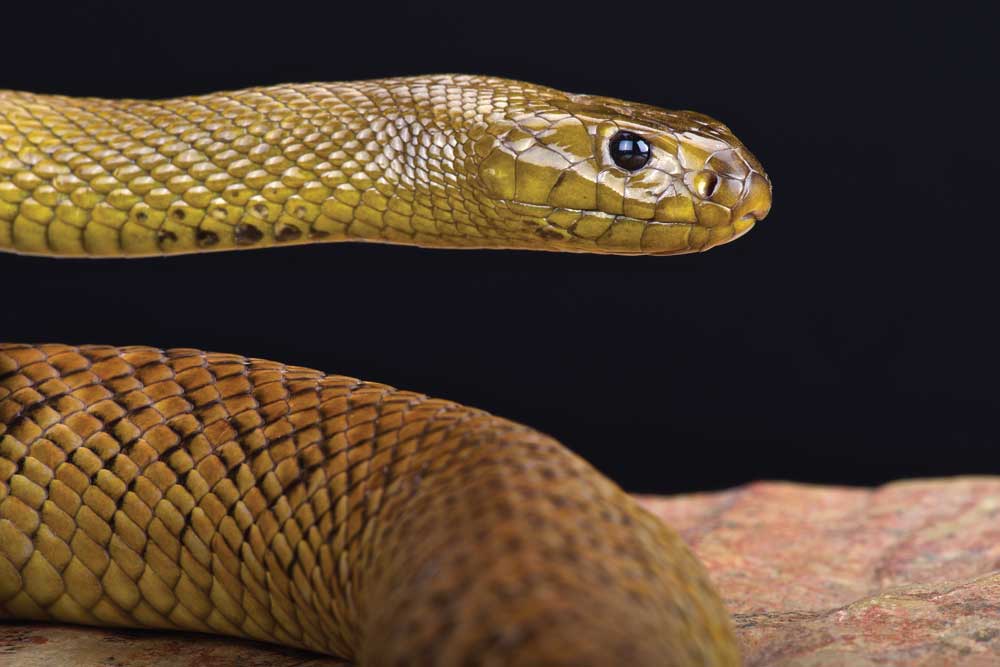Introduction
Tiger serpents (Notechis scutatus) are amongst one of the most remarkable yet been afraid reptiles discovered in Australia. With their striking appearance and potent venom, these serpents stimulate a mixture of admiration and caution. Observing tiger serpents in their native environment can be an electrifying experience for nature enthusiasts, wild animals photographers, and scientists alike. However, it's essential to approach this undertaking with regard for the animal's environment and an understanding of safety measures to stop snake bites.

In this extensive overview, we'll check out just how to safely observe tiger snakes in their natural environment. We will certainly cover topics varying from understanding their actions and habitats to first aid for serpent bites-- equipping you with expertise to boost your experience while minimizing threats.
What is a Tiger Snake?
Tiger snakes are highly poisonous snakes native to Australia, specifically Tasmania and seaside areas. They are recognized for their unique banded coloration looking like a tiger's red stripes, which can vary from yellowish-brown to dark brownish or perhaps black.
Physical Characteristics
Tiger snakes are tool to large-sized snakes that can grow up to 2 meters long. Their bodies are durable, and they have a broad head that is noticeably bigger than their necks.
Habitat Preferences of Tiger Snakes
These reptiles generally inhabit wetlands, tidewaters, and coastal regions yet can likewise be discovered near freshwater resources like rivers and lakes. Recognizing where these snakes live is important for any individual aiming to observe them safely.
Understanding Tiger Snake Behavior
Are Tiger Snakes Venomous?
Yes, tiger snakes are among the most venomous snake species internationally. Their venom includes neurotoxins that can bring about major clinical issues if bitten.
Behavioral Traits
Tiger serpents are usually shy creatures; they choose to avoid human communication. Nevertheless, they can become aggressive if intimidated or collared.
Where Can You Find Tiger Snakes?
Tiger Serpent Habitat Exploration
To safely observe tiger snakes in their all-natural habitat, it's important first to recognize where they grow. They often tend to favor:
- Coastal marshlands Mangroves Swamps Riverbanks
Best Places for Observation
Some recommended areas consist of:


- Tasmanian wetlands The shorelines of southern Australia National parks with water bodies
Safety Precautions Before Observing Tiger Snakes
Understanding the Risks of a Tiger Snake Bite
Although encounters with tiger serpents can be awesome, understanding the threats entailed is vital:
Recognize signs of a serpent bite: swelling at the website, pain radiating from the bite area. Know emergency calls: Familiarize on your own with local emergency situation services. Carry a first-aid package particularly outfitted for snake bites.First Aid for Snake Bites: What You Need to Know
Knowing what steps to take if bitten could save your life or somebody else's:
- Stay calm; activity raises poison spread. Call for medical assistance immediately. Do not apply ice or attempt suctioning.
How to Securely Observe Tiger Snakes in Their Natural Habitat
When you determine to observe tiger serpents in the wild:
Dress Appropriately: Use lengthy trousers and tough boots. Use Binoculars: Maintain a secure distance while observing these reptiles. Avoid Sudden Movements: Quick motions may stun them. Stay on Developed Trails: Avoid roaming into dense underbrush where visibility is low.Equipment Required for Observation
Essential Equipment Checklist
- Binoculars First-aid set specifically developed for snake bites Field manual on Australian reptiles Camera (with zoom capacity)
Snake Bite Emergency treatment Kit Essentials
A well-appointed first aid package ought to consist of:|Product|Purpose|| -------------------------------|-------------------------------|| Compression bandage|To paralyze the affected area|| Antihistamines|For allergic reactions|| Emergency situation contact numbers|Quick accessibility during emergency situations|
Interpreting Tiger Serpent Signals
Understanding exactly how tiger snakes communicate with body language assists onlookers assess You can find out more when it's safe or risky:
Common Behaviors
Defensive pose: If coiled or elevated off the ground. Retreating behavior: When they slowly pull back from possible threats.Dealing With Prospective Encounters
Even with preventative measures taken, an encounter might still happen during your monitoring trip:
Remain calm; stressing just increases risks. Slowly back away without transforming your back on the snake. Make your visibility understood verbally however avoid unexpected movements.Frequently Asked Concerns Regarding Tiger Snakes
1. What must I do if I see a tiger snake?
copperhead snake speciesRemain calmness; observe from a range without disturbing it.
2. Are infant tiger snakes dangerous?
Yes, juvenile tiger snakes are born poisonous and might position threats comparable to adults in spite of being smaller.
3. How usual are tiger snake bites?
While occurrences happen yearly in Australia, casualties are rare as a result of timely treatment availability.
4. Can I maintain a tiger serpent as a pet?
Keeping wild tiger serpents as pet dogs is prohibited in several areas as a result of preservation laws.
5. What does a tiger serpent attack look like?
Bite marks normally show 2 puncture wounds in addition to localized swelling and discoloration.
6. Exactly how efficient is antivenom?
Antivenom treatment is highly efficient when carried out prompt after a bite.
Conclusion
Observing tiger serpents in their all-natural habitat supplies a thrilling opportunity for wild animals lovers yet need to be approached with caution and regard for both the creature and its atmosphere. By arming on your own with understanding about these remarkable reptiles-- including recognizing their actions and safety measures-- you can delight in unforgettable experiences while substantially decreasing brown snakes threats connected with encounters.
In summary, always prioritize safety by preparing appropriately before embarking on any wildlife monitoring expedition-- especially when handling a few of nature's most poisonous creatures like the tiger snake!